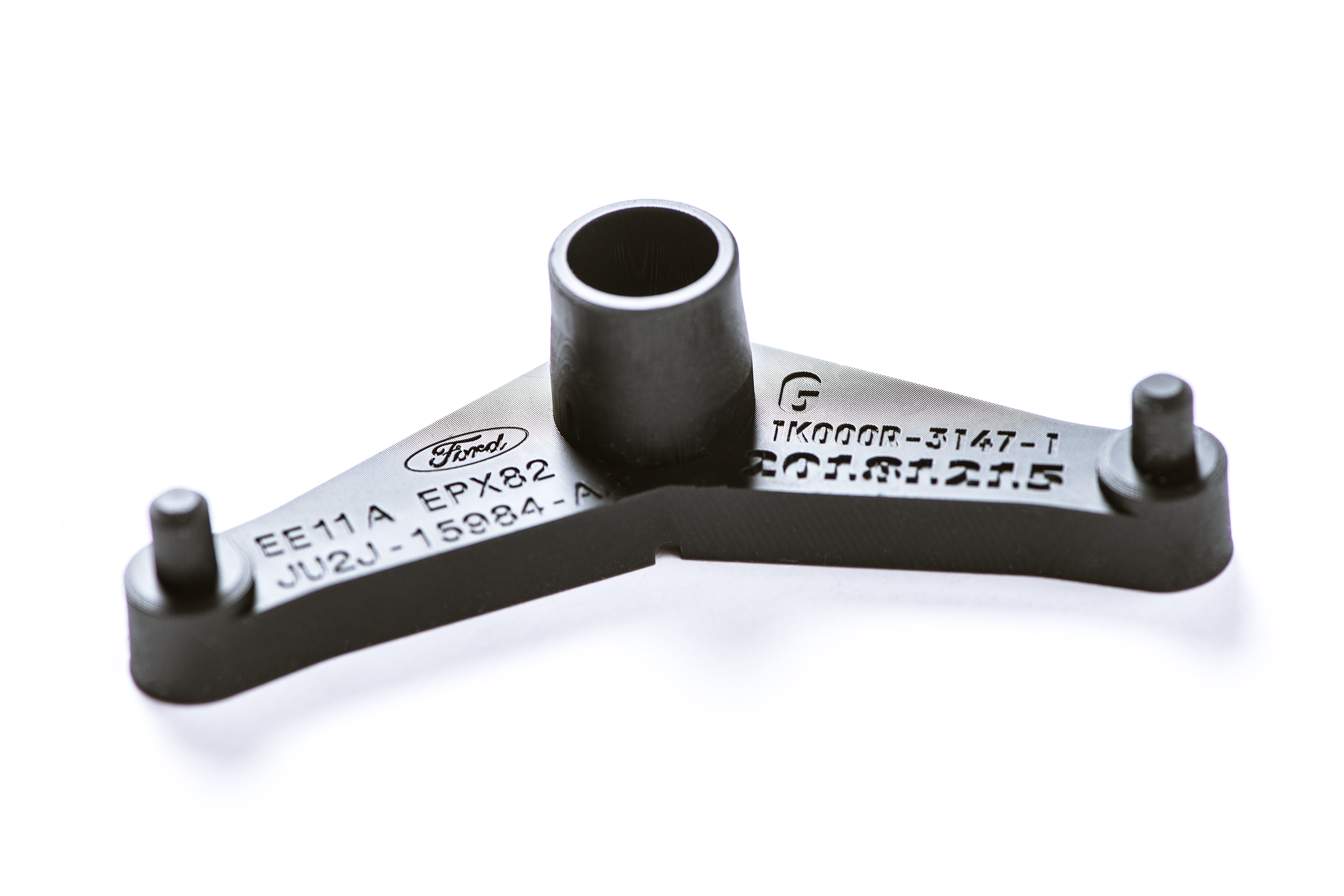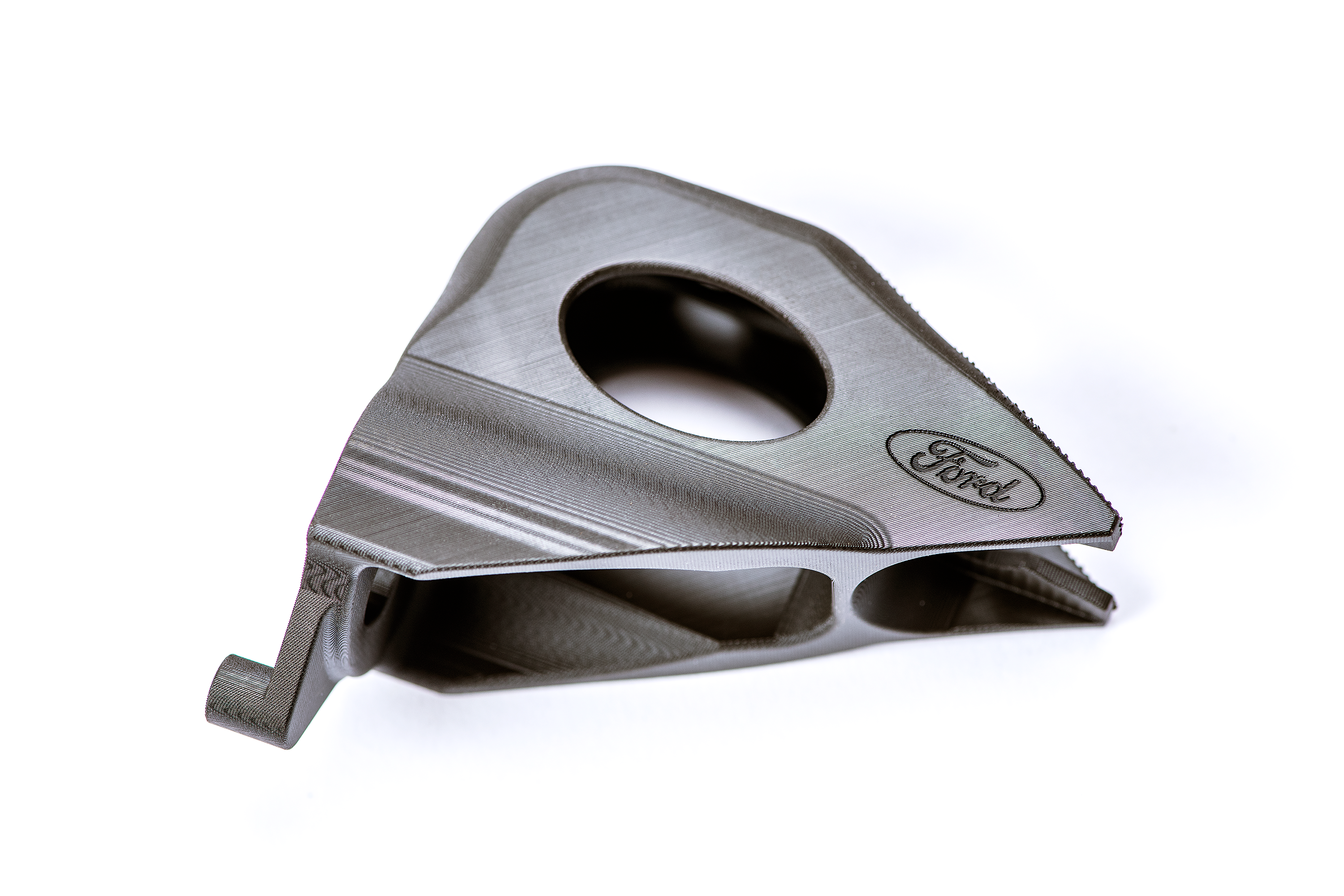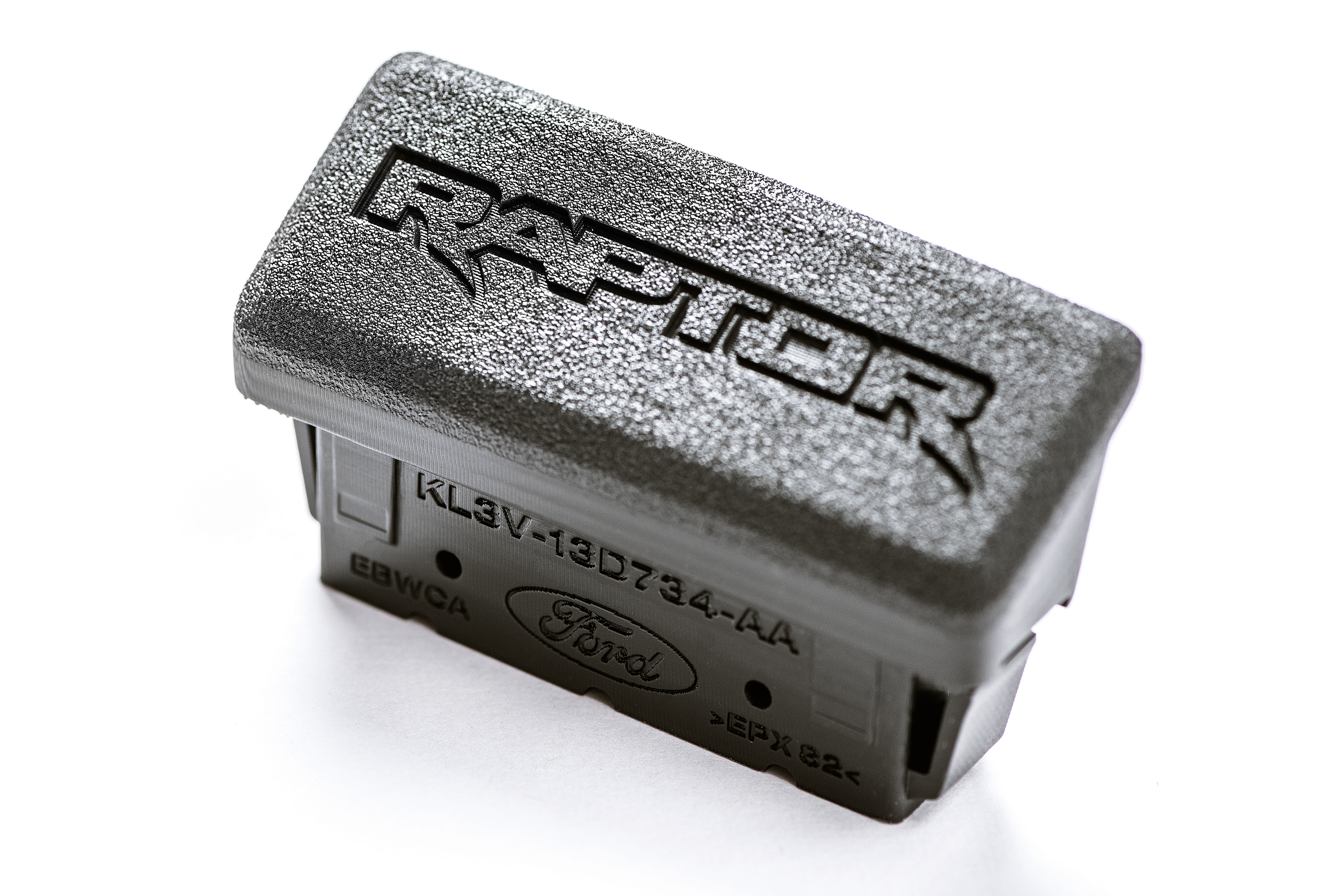Today, Carbon, the Silicon Valley-based company behind Digital Light Synthesis (DLS) 3D printing technology, has debuted the first 3D printed parts in production for Ford, at the North American International Auto Show (NAIAS) in Detroit.
Together, the companies are displaying Ford Focus HVAC (Heating, Ventilation and Cooling) Lever Arm Service Parts, Ford F-150 Raptor Auxiliary Plugs, and Ford Mustang GT500 Electric Parking Brake Brackets.
“We are thrilled to be collaborating with Ford and are excited about the many opportunities to leverage the power of digital manufacturing to deliver durable, end-use parts with similar – or better – properties as injection molded parts,” said Dr. Joseph DeSimone, CEO and Co-founder of Carbon.
“The automotive industry shows significant promise for using digital fabrication at scale, and our work with Ford is a perfect example of the kind of innovation you can achieve when you design on the means of production.”

A Ford Focus HVAC Lever Arm Service Part. Photo via Carbon.
Carbon, Ford & 3D printing
According to Joy H. Forsmark, a technical expert at Ford Motor Company Research and Advanced Engineering Laboratories, Ford regards themselves as one of the earliest adopters of 3D printing. This is because the company purchased the “3rd Stereolithography machine ever made” back in 1988.
Following this, with an interest in optimizing production, Ford partnered with Carbon in 2015. Since then, the partners have established an Advanced Manufacturing Center in Redford, Michigan, to 3D print parts the Ford Shelby Mustang GT500 sports car.
Ford continues to leverage Carbon’s DLS technology and EPX (epoxy) 82 material which has passed rigorous performance standards including interior weathering; short- and long-term heat exposures; UV stability; fluid and chemical resistance; flammability; and fogging.

A Ford Parking Brake Bracket created through additive manufacturing. Photo via Carbon.
Digital Light Synthesis
DLS technology is enabled by Continuous Liquid Interface Production (CLIP). This process uses digital light projection, oxygen permeable optics, and programmable liquid resins to manufacture parts with “excellent mechanical properties, resolution, and surface finish.”
An upgrade of the original M1 model, Carbon’s M2 3D printer has used CLIP to produce adidas’ Futurecraft 4D 3D printed midsoles. The M2 also plays a central role in Carbon’s SpeedCell system, a configuration that connects the 3D printers to a Carbon Smart Part Washer, boosting productivity.
Ford and Carbons 3D printed parts in production can be viewed at the Additive Manufacturing for Automotive Workshop at NAIAS until the January 27.

A Ford Raptor Plug created through additive manufacturing. Photo via Carbon.
Nominate for the upcoming 3D Printing Industry Awards 2019.
For the updates on 3D printing in the automotive sector, subscribe to the 3D Printing Industry newsletter, follow us on Twitter and like us on Facebook.
Looking for a fresh start this year? Visit 3D Printing Jobs to commence your career in additive manufacturing.
Featured image shows a Ford Focus HVAC Lever Arm Service Part created through additive manufacturing. Photo via Carbon.
